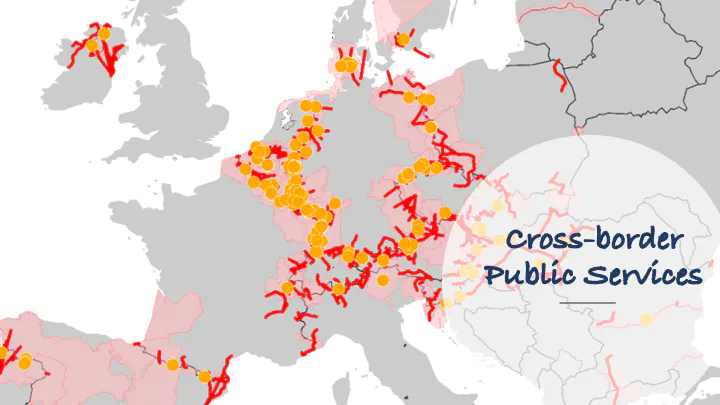Cross-border Public Services
March 2023

In the EU approx. 150 million people or roughly 1/3 of the population live in border regions. In many cases they need to travel longer for accessing public services, such as health care or education, or live with lower quality or more expensive public services, e.g. in the fields of public transport or environmental protection, than people in non-border regions. The provision of cross-border public services can help in these cases.
Cross-border public services are long-term (or permanent) public service provisions in a cross-border region. They respond to a joint problem or development opportunity in the cross-border area with public involvement and target people or enterprises on both sides of the border in a non-discriminatory way.
Ideally, cross-border public services are established, provided and financed in cooperation between players from both sides of the border. However, the variety of provision and financing solutions is wide as is the degree of involvement of entities from both sides of the border.
A recent analysis of cross-border services in the EU, funded by ESPON (Opens in a new window)and DG REGIO (Opens in a new window), identified and analysed 1,551 cross-border public services in the EU covering a wide range of fields, including transport, disaster management, education, health care etc.
Transport cross-border public services stand with 966 service or 61.5% for the lion share of all cross-border public services in the EU. Except for a few cases which date back to the 1960 or even earlier, they started to emerge in the 1990s and have been growing in numbers since then. In most cases they concern cross-border public transport, which has already been discussed in an earlier blog post (Opens in a new window). This concerns mainly regional bus and rail services, and in a few cases also tram or ferry services crossing national borders. One of these tram lines runs between Strasbourg in France and Kehl in Germany. Furthermore, some cross-border public services simplify cross-border ticketing systems to facilitate the use of cross-border public transport. One of a growing number of examples – and probably the most advanced one – is the full cross-border tariff integration for all journeys within the Greater Geneva metropolitan area. Altogether, public cross-border transport services help to improve mobility across national borders.
To read this post you'll need to become a member. Members help us fund our work to ensure we can stick around long-term.
See our plans (Opens in a new window)
Already a member? Log in (Opens in a new window)


